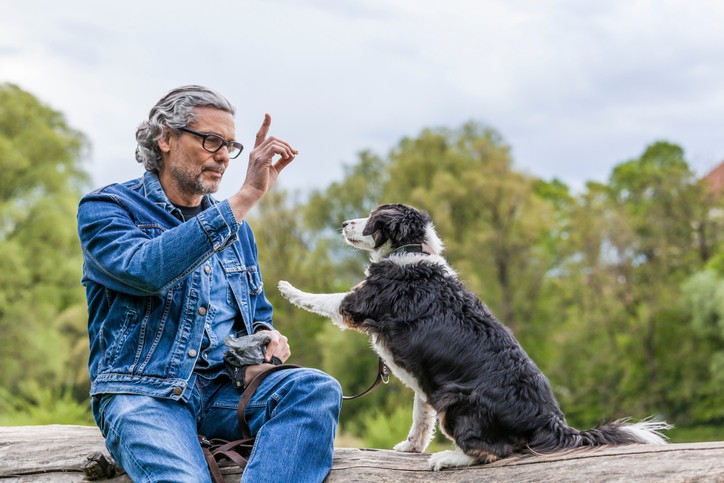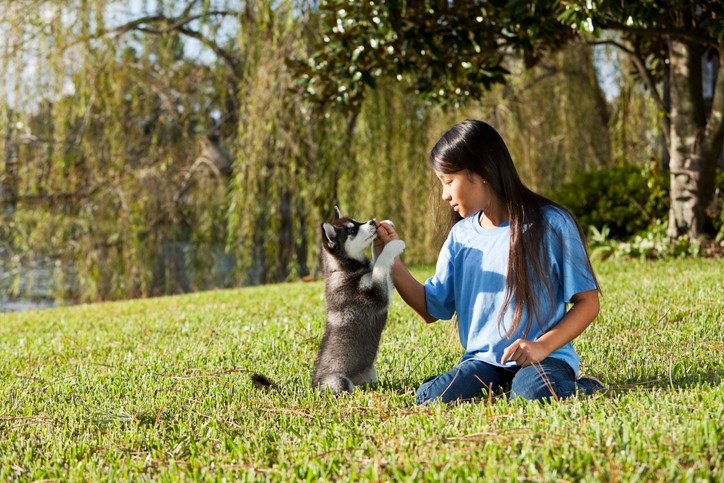Training a dog without treats vs training with treats
Is training a dog without treats possible? Check out these tips for rewarding your dog during training

Is training a dog without treats possible? Can an old dog learn new tricks? With positive reinforcement training, they certainly can! But should they learn those new tricks with treats? Dog owners seem to be split on this issue. While using the best dog treats during training can have many benefits, some pet owners worry that this is not a good long term solution for their dogs. To get to the bottom of the treat debate, we first need to understand how positive reinforcement works, and the types of rewards that may be used in training. Ultimately, it’s up to you to find the kind of reward that works best for both you and your dog!
- The best puppy treats: Reward your young dog in style
- Best dental chews for dogs: Six options to keep your dog's teeth clean
- Make Your Own Homemade Dog Treats
Understanding positive reinforcement training
Positive reinforcement training is a common and highly recommended training style for every age and breed of dog. It is also sometimes called reward-based training, force-free training, or R+ training. Although the science behind this type of training is complex, it ultimately boils down to a simple concept: if we reward a desirable behavior, the dog will be more likely to repeat that behavior. The key to good positive reinforcement training is consistency, patience, and timing rewards appropriately. It can take some practice to get the hang of using positive reinforcement in your day-to-day training sessions, but the results are worth the effort. If you’re struggling, a good positive reinforcement dog trainer can help you master the basics and find the rewards that work best for your dog.
Training a dog with treats
Treats are a favorite reward among positive reinforcement trainers because they are readily available, can be given to the dog quickly, and most dogs love them! Pet owners often worry that they are 'bribing' their dog by giving treats for good behavior, but don’t worry – this is not at all the case! Instead, think of training sessions as your dog going to work. You wouldn’t continue going to your job every day if they stopped paying you, would you? Just like you, your dog needs some form of 'payment' to motivate him to do the work. Without payment, it’s far more rewarding for him to just do whatever he wants!
If you do decide to use treats to train your dog, make sure you follow a few simple rules. Treats should never make up more than 10% of your dog’s daily calorie intake, even during training. Low calorie treats like carrots, sweet potato, or frozen blueberries are great options if your dog is willing to work for them, or you can portion out your pet’s kibble for the day and use that in place of treats. The treats you use must be 'high value' enough to be rewarding for your dog, so you may need to experiment to find what your dog likes best. For difficult tasks or situations that make your pup nervous, you may need to use higher value treats – something extra tasty like pieces of meat or cheese – to encourage them to perform the required task.

Training a dog without treats
Despite the ease and success of positive reinforcement training using treats, many pet owners still prefer to avoid treats during training. This may be necessary if your dog has health issues such as food allergies or a weight management problem, or you may simply prefer to find another means of rewarding your dog. The good news is that positive reinforcement training is still very possible even without treats. The key is finding a reward that your dog is willing to work for. Working dogs, such as police and military canines, are often rewarded with a favorite chew toy, which is both effective and easy for the handler to carry and employ in the field.
Some highly scent-motivated breeds, like the Beagle and the Basset Hound, may respond well to a release command such as “go sniff”, which allows them a few moments on their own to explore. Other dogs are so eager to please that they may respond well to praise and petting alone as their reward. You’ll need to experiment a little at first to find which type of reward your dog likes best. If the reward isn’t exciting enough, your dog won’t be willing to work for it.
Phasing out rewards during positive reinforcement training
Many pet owners worry that they will need to carry around a pocket full of treats for the rest of their dog’s life if they use positive reinforcement training. Fortunately, this isn’t the case! As your dog becomes more reliable with his response to a given command, you can start to intermittently reward the behavior. For example, when you ask your dog to “sit”, you may still praise him with a “good boy”, but you’ll only offer a treat after every few correct “sit” responses. The rewards should still be fairly frequent at first, but over time you can gradually taper down the frequency until you’re only offering a treat reward occasionally.
Intermittent and irregular rewards are the best way to help the training “stick” in your dog’s mind. To understand this concept further, picture a person gambling at a casino slot machine. If they win a prize every time they pull the lever, they’ll continue pulling the lever until they stop winning. Once the machine stops “paying out”, they’ll get up and leave. Casino owners know this, which is why the machines are programmed to only give rewards at random intervals. The player will continue performing the desired behavior (inserting money and pulling the lever) for a much longer period of time, because they never know exactly when the machine will pay out. The same concept applies to your dog, but in this case, you’re the machine paying out the tasty treats!
Training a dog is more than just rewards
Whatever type of reward you choose to use during your dog’s training, it is most important that you employ it consistently and effectively. The reward must be given immediately after the desired behavior – otherwise, your dog won’t know what he’s being rewarded for! With patience and practice, you and your dog will both become more comfortable with reward-based training. The best part is that it will be a fun experience for both of you!
PetsRadar Newsletter
Get the best advice, tips and top tech for your beloved Pets
Dr. Elizabeth Racine is a small animal general practice vet covering all things pet health and wellness. Her special interests include veterinary behavior, nutrition, and internal medicine.
As a freelance writer, Dr. Racine has written content for major companies in the industry such as the American Kennel Club, Merck Animal Health, Bayer PetBasics, Elanco, and CareCredit. In her free time, Dr. Racine enjoys playing trampoline dodgeball, hiking with her beagle Dasher, and spending time with her three mischievous cats.

